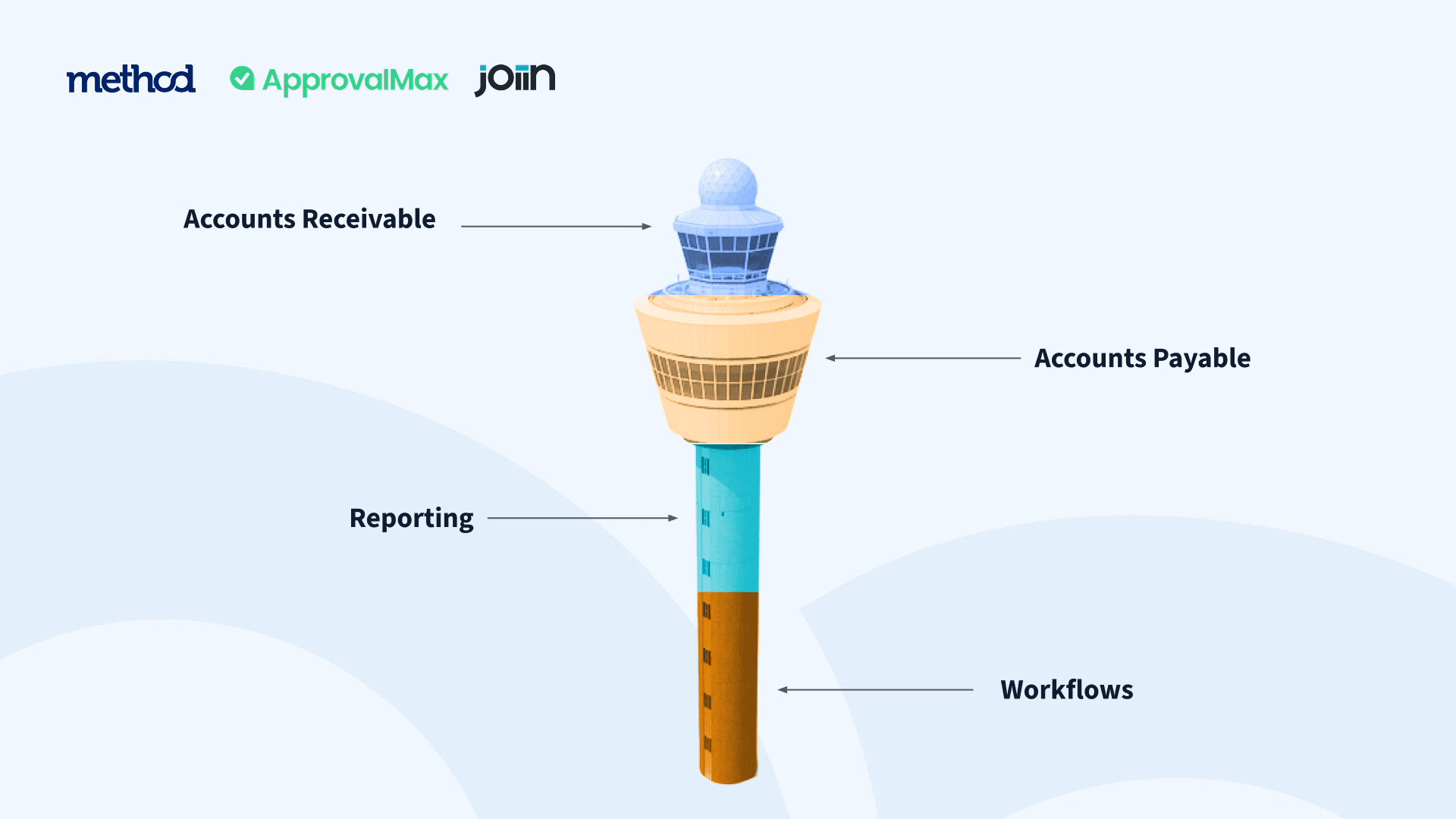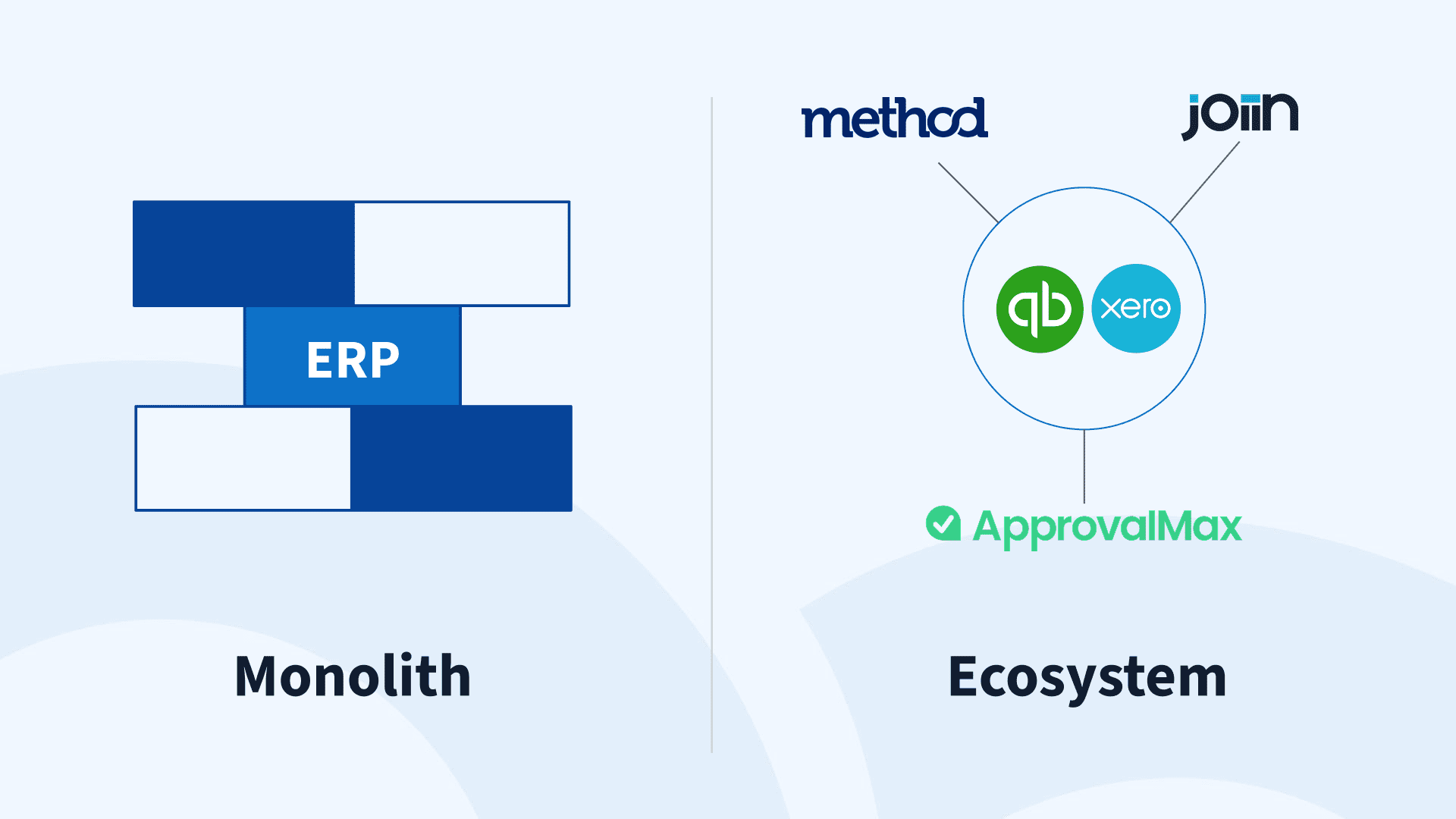How to Build a Control Tower for Smarter & Faster Business Decisions
As businesses add locations, teams, and entities, and complexity, four systems start creaking: AR, AP, reporting, and the workflows that connect them. This webinar dug into how to build a “control tower” that keeps those parts talking—helping you make faster and smarter decisions.
Speakers
- Helina Patience, CPA, CMA — Head of Accounting @ ApprovalMax; CEO @ Entreflow
- Harry Symons — Head of Customer Success @ Joiin
- Hosted by Matas Pranckevicius — Content Lead @ Method

Does AR take too long?
In a live poll, we asked: “How long does it usually take for your invoices to get paid?”
Most responses landed in 31–60 days, with a healthy chunk around two weeks. We think this can be a lot better, and it’s not that some industries are “irredeemable.”

Things to consider, according to the speakers:
- When invoices are paid late, customers paying are effectively using you like a bank, interest-free.
- You can change behavior. Start by avoiding AR where possible: deposits, auto-pay, and easy payment paths.
- Be politely relentless. People pay the squeaky wheel.
- If you’ve got aging invoices, be friendly but firm: explain the backlog, offer payment plans, and set new rules going forward.
- Rolling changes is fine: start with new customers, then migrate existing ones.
On 💸 checks: Helina’s firm doesn’t let clients accept them. Check fraud is rampant, postal delays make things worse, and “the check is in the mail” is the oldest cash-flow stall in the book. Offer auto-pay; if a customer wants float, trade it for longer terms while keeping control of collection.
Demo: how AR can run without having to constantly chase clients
We walked through a quick demo of how Method handles the front-end of estimates, invoices and cash collection.
Want a full in-depth Method demo and live Q&A with a product expert? ➡️ Register for our 30-minute weekly workshop.
- Create an estimate, email or SMS it, and even require a deposit.
- The customer portal lets clients accept and pay directly (with signature), and everything bi-directionally syncs with QuickBooks (Desktop/Online) and Xero.
- The point isn’t one estimate—it’s standardizing the process across teams so Sales never needs to poke around in the accounting file, and Finance still sees every step.
AP: manual approvals aren’t “safer,” they’re slower (and riskier)
Attendee questions hit the usual headaches: duplicate bills, multi-page invoices, who approves what, and closing delays when suppliers are late.
Helina’s AP guidance (and a story):
- Paper piles lead to batch “rubber-stamp” approvals. That’s not safer.
- Use tools with receipt capture/OCR and duplicate detection (e.g., ApprovalMax’s capture).
- Push approvals through rules instead of inboxes: by location, role, amount thresholds, class/project.
- Add auto-approval for obvious, low-risk items (e.g., small recurring software).
- Include an optional review step before approvals if needed.
- Every action builds a full audit trail, and the documents + audit log flow into QuickBooks/Xero—auditors love this.
Harry’s AP war story: sacks of soggy mail, hand-coding hundreds of invoices, double-counting, and suppliers (like the window cleaner) waiting months. The bigger you get, the less acceptable that becomes.
Cash-flow considerations: Real-time AP avoids “$70,000 surprise due tomorrow.” Early visibility lets you plan, verify vendor performance/rates, and eliminate guesswork.
Reporting: what “control tower” visibility looks like
We should think about “reporting” as everything from basic month-end to multi-entity consolidation.
Harry’s Join walkthrough:
- Build consolidation from multiple companies.
- Flip reporting currency (e.g., to GBP for a lender); the tool handles the translation.
- See company-level breakdowns and toggle eliminations to check intercompany lines before/after.
- Use dashboards for cash and key metrics so you’re not waiting on a quarterly Excel marathon.
“Ecosystem,” not monolith

Helina’s implementation view:
- Keep QuickBooks/Xero as the core, and plug in robust apps (AR/AP approvals, reporting) as needed.
- These aren’t six-month ERP migrations—many setups take about a day to pilot and prove.
- As the business evolves (inventory needs, new workflows), swap components without ripping out the whole stack.
- Compared to big ERPs she used in industry, today’s app ecosystem is more flexible, faster to adopt, and frankly does more for less.
Q&A highlight: budget vs. actuals (and forecasting)
A closing question nailed a common pain: aligning budget to spend so unapproved or unbudgeted costs don’t slip through.
Helina’s answer:
- In high-growth, forecasting can be more useful than a static budget—review monthly, not quarterly.
- Decision-makers need timely, trustworthy data to steer without guesswork.
- ApprovalMax can do budget checks against QuickBooks budgets by project/class during approvals, so overages are flagged before spend goes out.



